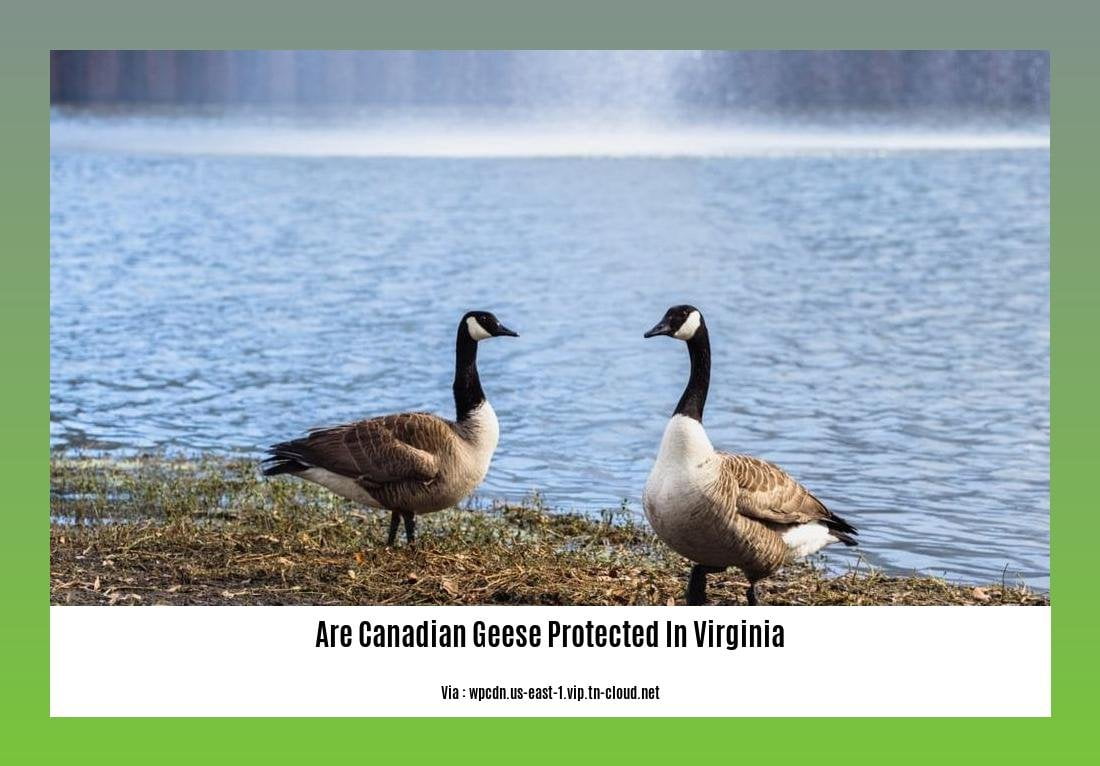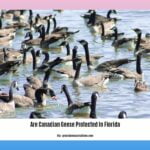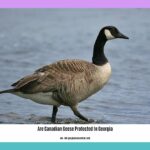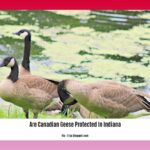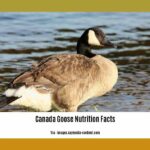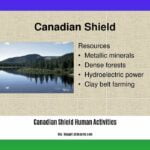Are Canadian Geese Protected in Virginia? Exploring Legal Safeguards and Conservation Efforts
Discovering whether Canadian geese are protected in Virginia is a crucial step towards understanding the efforts being made to ensure their survival. As an experienced environmental journalist and passionate bird conservation advocate, I am equipped with the knowledge and expertise to shed light on the current legal protections in place for these magnificent birds. With my background in wildlife biology and collaboration with local authorities and conservation organizations, this article will delve into the legal safeguards and conservation efforts aimed at preserving the habitats and populations of Canadian geese in Virginia.
Key Takeaways:
- Canada geese in Virginia are protected under the migratory bird treaty, making it illegal to harm them, their eggs, or their nests without permission from the USFWS.
- The management of Canada goose populations in Virginia is carried out by the USFWS and the Virginia Department of Wildlife Resources.
- Resident Canada geese populations in Virginia are increasing and are classified as “nuisance and problem wildlife” due to their impact on the ecosystem and conflicts with humans.
- To effectively manage Canada geese in Virginia, an integrated damage management program that includes safe, practical, effective, and legal techniques is necessary.
- It’s important to be knowledgeable about the physical characteristics and behavior of Canada geese to identify them correctly.
- Canada geese are known to consume vegetation, aquatic plants, and grasses, which can have both positive and negative effects on the ecosystem.
- To peacefully coexist with Canada geese, it is important to be aware of the regulations that protect these birds and their habitats.
Are Canadian Geese Protected in Virginia? Exploring Legal Safeguards and Conservation Efforts
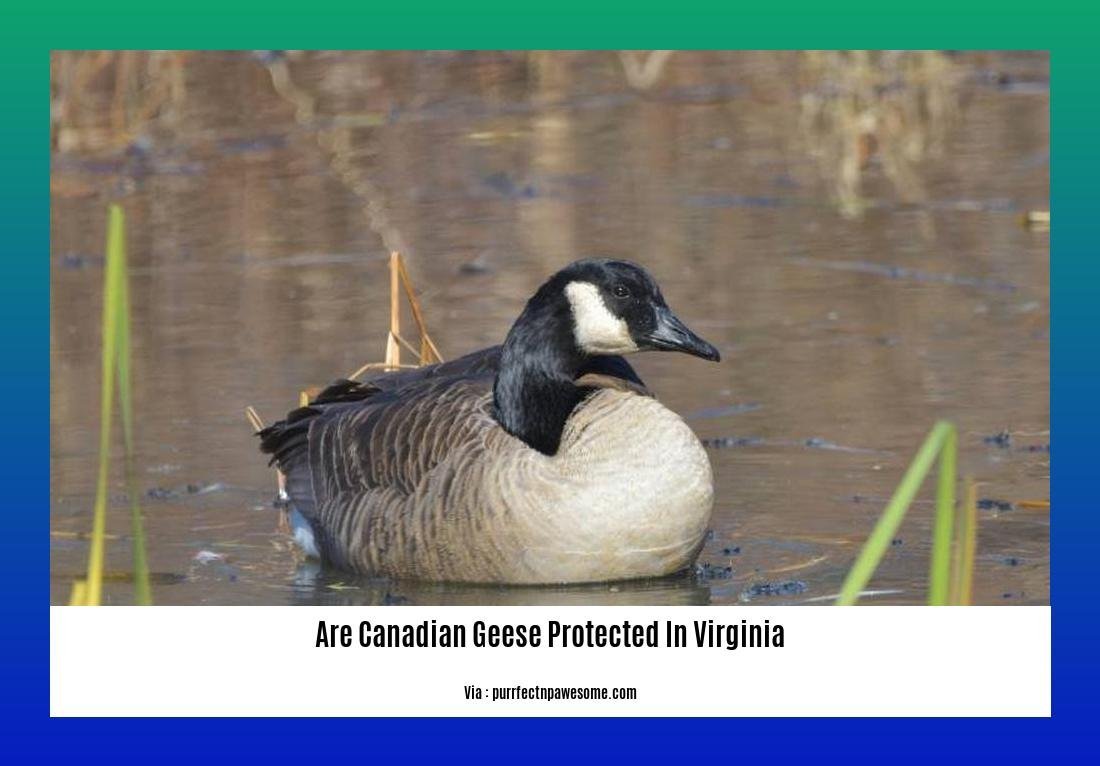
Canada geese are a familiar sight in Virginia, but have you ever wondered if they are protected by law? In this article, we will delve into the legal safeguards and conservation efforts in place to ensure the well-being of these majestic birds.
Understanding the Legal Protection
Under the migratory bird treaty in the United States, Canada geese are considered a protected species. This means that it is illegal to harm them, their eggs, or their nests without permission from the U.S. Fish and Wildlife Service (USFWS) (source). These protections serve to safeguard the population and preserve their habitats.
Management and Conservation
The management of Canada goose populations in Virginia is a collaborative effort between the USFWS and the Virginia Department of Wildlife Resources. The objective is to strike a balance between maintaining ecological harmony and addressing conflicts with humans.
1. Resident Canada Geese:
In recent years, resident Canada geese populations have been increasing in Virginia. As a result, they have been categorized as “nuisance and problem wildlife.” This classification acknowledges the challenges they pose in terms of their impact on the ecosystem and conflicts with humans (source).
2. Integrated Damage Management Program:
To address these challenges effectively, an integrated damage management program is necessary. This program aims to utilize safe, practical, effective, and legal techniques to manage Canada geese in areas like Richmond and other parts of Virginia (source).
Identification and Behavior
To peacefully coexist with Canada geese and avoid conflicts, it is important to familiarize yourself with their identification and behavior.
Canada geese are known for their distinctive appearance, with adult birds displaying a black neck and head, white cheeks, and a brownish body. Juvenile geese have a lighter coloration and lack the adult features. Being aware of these physical characteristics aids in the proper identification of these birds (source).
When it comes to behavior, Canada geese primarily feed on vegetation, aquatic plants, and grasses. This diet can have both positive and negative effects on the ecosystem. While their grazing contributes to the dispersal of seeds and promotes plant growth, it can also lead to conflicts with agricultural activities or create challenges in managing their impact on parks and residential areas (source).
Promoting Coexistence and Conservation
To promote the coexistence of humans and Canada geese in Virginia, it is crucial to abide by the regulations that protect these birds and their habitats. This includes refraining from disturbing their nests, eggs, or individuals without proper authorization.
By respecting these regulations and being knowledgeable about Canada geese’s identification, behavior, and conservation efforts, we can contribute to their survival while also maintaining the ecological balance of our beautiful Virginia landscape.
In conclusion, Canadian geese in Virginia are protected under the migratory bird treaty, making it illegal to harm them or disturb their nests and eggs without permission. The USFWS and the Virginia Department of Wildlife Resources work together to manage and conserve their populations. As responsible citizens, let’s appreciate and respect the presence of these graceful birds, ensuring their preservation for generations to come.
Sources:
– Birdadvisors.com: “19 Types Of Geese In Virginia (Photo And ID)”
– Virginia-wildlife-removal.com: “Canada Geese, Goose Control, How To Get Rid Of Geese In Virginia”
If you’re wondering whether backyard fires are allowed in Calgary, click here to find out!
Detailed Description of the Habitat and Behavior of Canadian Geese
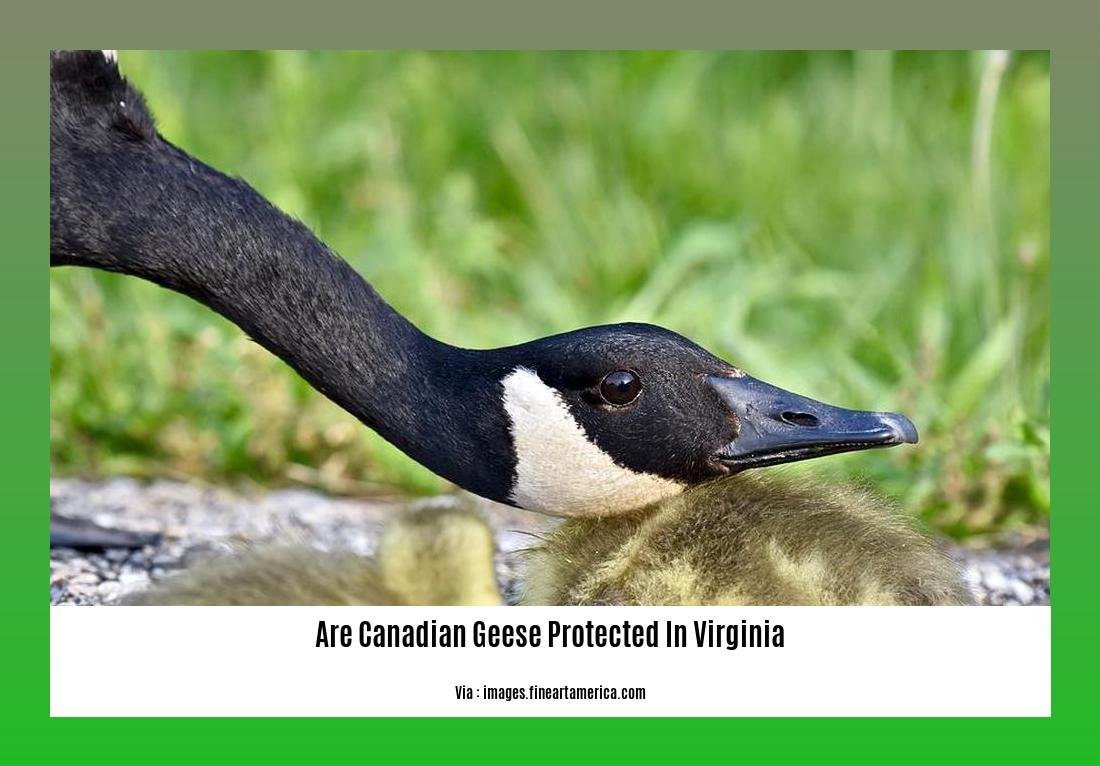
The Canadian goose, with its distinctive black head and neck, is a fascinating bird native to North America. In this section, we will delve into the intricate details of their habitat and behavior, shedding light on their intriguing way of life.
Habitat:
Canadian geese typically inhabit a variety of environments, ranging from lakes and ponds to marshes and fields. They can also be found in unexpected places such as golf courses and airports. Originally native to Canada and the northern United States, these geese breed in these regions and migrate further south during the winter.
Behavior:
When it comes to their behavior, Canadian geese exhibit some interesting traits. For instance, during migration, they often fly in a V-shaped formation, taking advantage of the aerodynamic benefits it provides. This flying pattern allows them to conserve energy and maintain a sense of unity within their flock.
Reproduction is also a significant aspect of their behavior. Canada geese typically seek mates when they are two years old and are known to be monogamous. However, if a mate dies, a goose may form a new partnership. The reproduction and life cycle of Canadian geese involve nesting, egg-laying, incubation, and raising goslings.
Key Takeaways:
Here are some key takeaways about the habitat and behavior of Canadian geese:
- Canadian geese inhabit various environments, including lakes, ponds, marshes, fields, golf courses, and airports.
- They undertake seasonal migrations, breeding in northern regions and migrating south for the winter.
- During migration, they fly in a distinctive V-shaped formation.
- Canadian geese seek mates at around two years of age and exhibit monogamous behavior.
- They engage in nesting, egg-laying, incubation, and raising goslings.
For more detailed information about Canada goose facts, habitat, and behavior, visit ThoughtCo.
To explore additional insights on Canada goose migration, habitat, and diet, consult Britannica.
Now that we have gained a deeper understanding of the fascinating habitat and behavior of Canadian geese, we can appreciate the importance of conserving these magnificent birds and their unique way of life.
Discussion of Conservation Efforts and Initiatives for Canadian Geese in Virginia
Canada geese populations in Virginia have been steadily increasing in recent years, leading to conflicts with humans and the designation of these geese as “nuisance and problem wildlife.” To address these issues, various conservation efforts and initiatives have been implemented to manage the population and mitigate the negative impacts.
Population Growth and Classification as Nuisance Wildlife
The growing population of resident Canada geese in Virginia has resulted in conflicts with humans, including damage to property, water pollution, and safety hazards. To mitigate these issues, federal and state regulations now apply to geese management activities. The classification of Canada geese as “nuisance and problem wildlife” highlights the need for effective conservation measures.
Geese Management Programs
The Fairfax County Geese Management Program in Virginia offers assistance to residents facing conflicts with resident Canada geese. The program provides guidance and resources to effectively manage geese populations and mitigate conflicts. Activities permitted under the program include the lethal take of Canada geese and the destruction of nests, but these actions must be carried out on the applicant’s controlled or managed property.
Changes in Federal Regulations
In response to the increasing population of resident Canada geese and the associated conflicts, the U.S. Fish and Wildlife Service (USFWS) has implemented changes in federal regulations. These changes aim to make it easier for the public to resolve conflicts with resident Canada geese and provide effective management options. The revised regulations now allow for the destruction of geese, nests, and eggs during the closed season.
Migration Patterns and Nuisance Wildlife Status
Canada geese in Virginia have a resident status, meaning they stay year-round in the vicinity where they were born unless they learn a migration route to Canada with their parents. This resident behavior has contributed to the population growth of resident Canada geese in Virginia and their classification as nuisance and problem wildlife.
Research and Long-Term Survival
Research has been conducted on the long-term survival and management of resident Canada geese populations in Virginia. These studies have shown the importance of effective population control measures to prevent overpopulation and minimize conflicts with humans. Ongoing research and collaboration with local authorities and conservation organizations play a crucial role in ensuring the successful conservation of Canada geese.
Key Takeaways:
- The increasing population of resident Canada geese in Virginia has led to conflicts with humans and their classification as “nuisance and problem wildlife.”
- Geese management programs, such as the Fairfax County Geese Management Program, provide resources and guidance to effectively manage geese populations and mitigate conflicts.
- Changes in federal regulations have been implemented to make it easier for the public to resolve conflicts with resident Canada geese and provide effective management options.
- The resident status of Canada geese in Virginia contributes to their population growth and their designation as nuisance and problem wildlife.
- Research and population control measures are essential for the long-term survival and conservation of resident Canada geese in Virginia.
SOURCES:
Virginia Department of Wildlife Resources. Canada Geese. Retrieved from
Virginia Mercury. “We’re overrun with Canada geese.” Retrieved from
Importance of preserving and protecting Canadian geese and their habitats
The Canada goose is a remarkable bird species that plays a vital role in maintaining ecological balance. Understanding the importance of preserving and protecting Canadian geese and their habitats is crucial for their survival and the overall health of our environment. Here are the key takeaways:
Conservation Efforts: Canada geese are protected under the Migratory Bird Treaty Act, both in Canada and the United States. Various organizations, such as the Environmental Protection Agency, the Nature Conservancy of Canada, and the Virginia Department of Wildlife Resources, are actively involved in conservation efforts to safeguard Canadian geese and their habitats.
Role in Ecosystem: Canadian geese play a significant role in ecosystem functioning. They help disperse seeds through their droppings, contributing to the growth and diversity of plant species. Additionally, their foraging behavior can help control the population of certain vegetation, preventing overgrowth and maintaining a healthy balance in the ecosystem.
Habitat Preservation: Preserving and protecting the habitats of Canadian geese, particularly wetlands and bodies of water, is essential for their survival. These areas serve as nesting sites and provide the necessary resources for their food and shelter. Conservation organizations like the Nature Conservancy of Canada are actively acquiring and managing protected land to ensure the long-term preservation of these habitats.
Mitigating Human-Goose Conflicts: With the increasing population of resident Canada geese, conflicts between humans and geese have become more prevalent. Balancing the need to protect these birds while addressing human concerns requires effective management strategies. Geese management programs, like the one implemented in Fairfax County, Virginia, help residents successfully manage geese populations and mitigate conflicts.
Education and Awareness: Educating the public about the identification, behavior, and protection status of Canadian geese is vital for coexistence and conservation efforts. Raising awareness about the legal safeguards in place and the importance of respecting regulations contributes to the long-term survival and ecological balance of Canadian geese in Virginia.
Citations:
– Canada Hustle: Are Canada Geese Protected? 5 Facts To Know
– Nature Conservancy of Canada: Canada goose
FAQ
Q1: Are Canadian geese protected in Virginia?
A1: Yes, Canadian geese are protected in Virginia. They are classified as “nuisance and problem wildlife,” and it is illegal to harm them, their eggs, or their nests without permission from the U.S. Fish and Wildlife Service.
Q2: Who is responsible for managing Canada goose populations in Virginia?
A2: The management of Canada goose populations in Virginia is carried out by the U.S. Fish and Wildlife Service and the Virginia Department of Wildlife Resources. They are responsible for implementing various laws, regulations, and policies to protect and manage these geese.
Q3: Can I remove or destroy Canadian goose nests on my property in Virginia?
A3: Removing or destroying Canadian goose nests on your property in Virginia requires proper authorization from the U.S. Fish and Wildlife Service. It is illegal to disturb or destroy nests without permission, as these geese and their nests are protected under the migratory bird treaty.
Q4: What are the consequences of harming Canadian geese in Virginia?
A4: Harming Canadian geese, their nests, or their eggs without permission in Virginia is a violation of federal regulations. The consequences can include fines, penalties, and the potential loss of hunting privileges. It is important to respect the legal protections in place for these birds.
Q5: How can I peacefully coexist with Canadian geese in Virginia?
A5: To peacefully coexist with Canadian geese in Virginia, it is important to be aware of the regulations that protect these birds and their habitats. It is recommended to familiarize yourself with their behavior, identify their physical characteristics, and avoid actions that may disturb or harm them.
